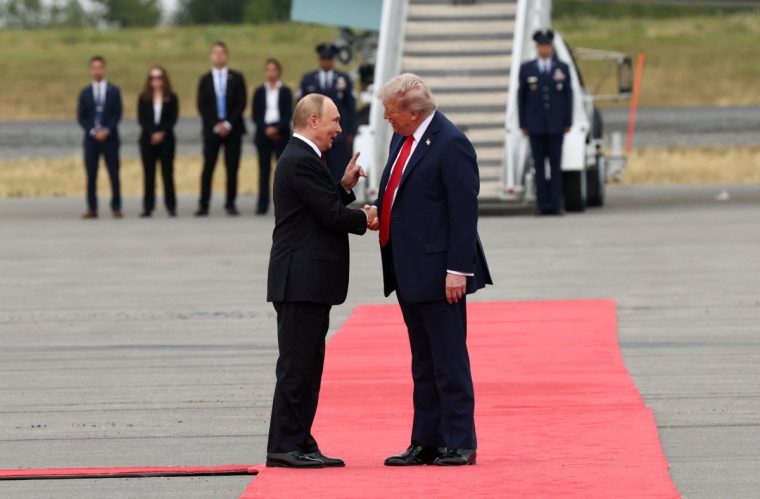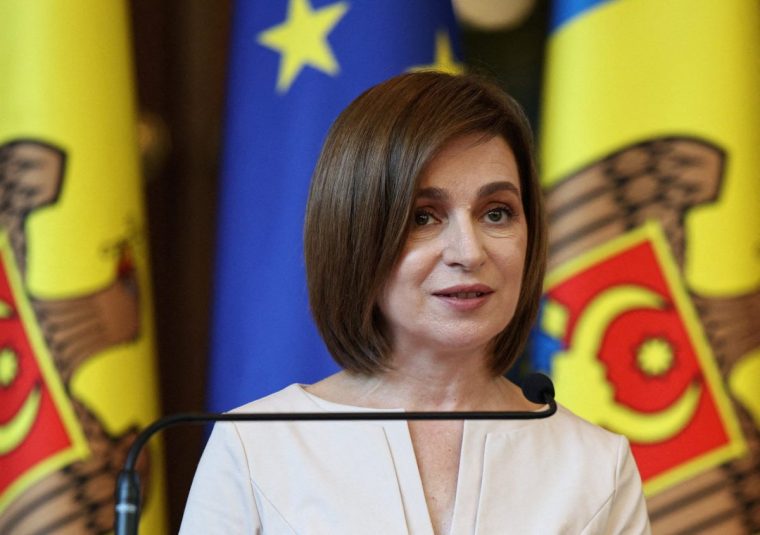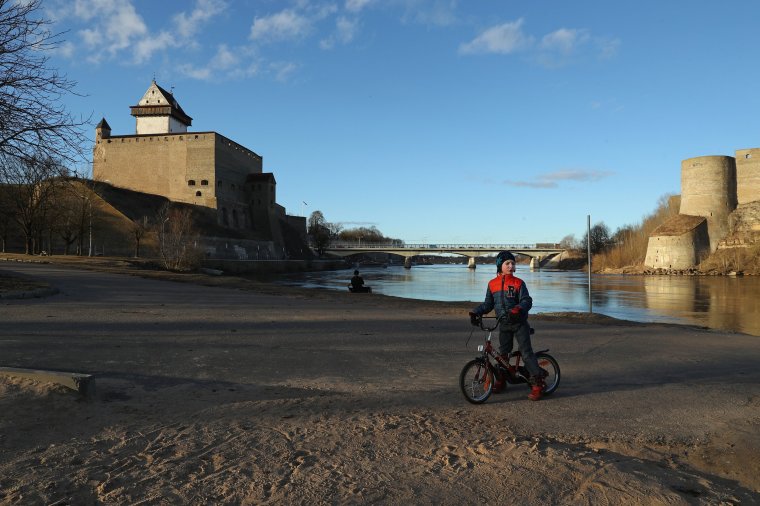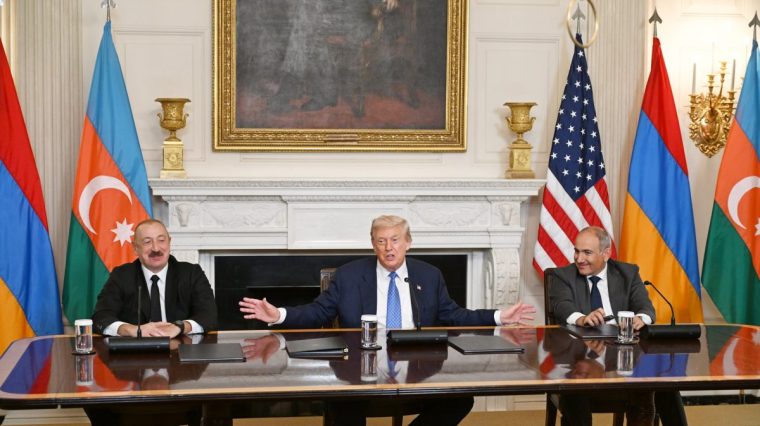‘Russia is on a war economy. He’d be looking at the next time they could use force’
Conquest of Ukrainian territory could embolden Vladimir Putin to invade elsewhere in Europe and step up attacks on Nato countries to test the alliance’s resolve, experts have told The i Paper.
Securing territorial concessions could lead to Russia’s invasion of Moldova and its acceleration of hybrid attacks on the Baltic states.
After meeting Donald Trump in Alaska on Friday, the president of Russia reiterated his position that the “root causes” of the conflict in Ukraine must be resolved.
The phrase is understood to be shorthand for a series of maximalist demands aimed at addressing Russia’s diminished status since the collapse of the Soviet Union, in addition to international recognition of Russia’s occupation of Ukrainian land.
Since the start of the war, Putin’s idea of peace has also meant Ukraine abandoning its Nato aspirations, accepting permanent neutrality and limits on its armed forces, as well as the installation of a pro-Russian puppet regime in Kyiv.
But Putin would not necessarily stop at Ukraine in his bid to restore Russia to superpower status, say experts. Instead, he would use a peace deal in Ukraine to rebuild militarily before turning his attention to other former Soviet Union satellite states.

Putin would look for next chance to use force – and Moldova is an easy target
Russia would see gaining territory in Ukraine as a victory, and encouragement to continue its use of force, experts said.
“Putin will present a peace agreement as a victory,” Dr Neil Melvin, Director, International Security at the Royal United Services Institute (Rusi) think-tank in London, told The i Paper.
“It would be framed as Russia reclaiming its lands, weakening the Ukrainian threat and damaging the West. But I think he’d be unlikely to rest.
“He’s moved Russia onto a war economy. He’d be looking at the next time they could use force.”
Russia would see any peace agreement as temporary, using the pause in hostilities to regroup and prepare to push for further territory in Ukraine and beyond, Katia Glod, deputy head of foreign policy at the New Eurasian Strategies Centre (NEST), said.
“Apart from Ukraine, I think the next target could be Moldova,” she told The i Paper. “It would be very easy for the Russian army.”
Moldova, which separated from the Soviet Union in 1991, is sandwiched between Ukraine to the east and Romania to the west, with a population of 2.5 million.
It is not a Nato member, meaning Russia would not risk triggering a collective response from the 32-member alliance by invading.

To reach Moldova, Russian forces would need to push further through southern Ukraine towards Odesa, building upon the territory already seized in the southern Zaporizhzhia and Kherson regions.
But around 1,500 Russian soldiers are already based in part of the separatist region of Transnistria, which unilaterally declared independence from Moldova in 1990, with Moscow’s support.
“The Russian army could reunite with the troops located in Transnistria and overwhelm Moldova, which is a small country with a tiny army,” Ms Glod said.
In June, Moldova’s Prime Minister, Dorin Recean, claimed that Russia had plans to deploy a further 10,000 troops in Transnistria, citing intelligence assessments.
“This is a huge effort to undermine Moldovan democracy,” he told the Financial Times. “They want to consolidate their military presence.”
The European Union claimed that last year’s presidential contest – in which Moldova’s pro-EU President Maia Sandu won a second term – saw “unprecedented interference” from Russia, including voter fraud.
Dr Melvin said that Russia would continue seeking to destabilise and influence Moldova’s elections, but suggested a full-scale invasion was unlikely in coming years.
Expect hybrid warfare with Nato in the Baltics
Putin’s mission to reclaim former Soviet territories could also bring the Baltic states – Estonia, Latvia, and Lithuania, which all border Russia and were formerly rules by it – within his sights, though all three are Nato members.
This means Russia would be more likely to employ hybrid tactics – such as infrastructure sabotage, cyber-attacks or assassinations – rather than pursue a conventional ground invasion, in Ms Glod’s view.
“I don’t think Putin would be trying to attack them directly, in the way he might attack Moldova,” she said. “It would be more like asymmetrical warfare.”
Last year, Estonia’s defence minister, Hanno Pevkur, warned that hybrid attacks were a “constant situation” for the country, blaming Russia for a series of cyber-attacks and acts of vandalism.
Moscow would use look to test Nato’s commitment to Article Five, the principle that all members will come to the defence of an ally that comes under attack, Ms Glod said.

“They could try a hybrid attack, let’s say a drone strike. It would be questionable whether it was intentional, or whether it was meant to land in Ukraine. The likely scenario would be that Britain and Poland would say Nato has to respond.
“But at the same time, countries like Spain or Portugal, which are less alarmed about their Russian aggression and farther away, would dispute whether it reached the threshold level.
“That could sew division within the bloc. That’s part of the psychological warfare – to divide and rule. That’s how the Kremlin thinks.”
If the Kremlin sensed a significant fracture within Nato, a minor incursion of a Baltic country could follow, Dr Melvin said.
“Putin may try a limited attack… to test whether all of Europe would come to their aid. If they don’t, then the whole idea of Nato breaks down at that point. If southern countries are not willing to fight over perhaps a small part of Estonia, a town like Narva in the northeast for example, I think that’s what we have to look out for.”
But attacking the Baltic states directly would be an “enormous gamble”, he added, leaving Russia’s nuclear forces in the north of country vulnerable from attack by Finland, which is a Nato member and strong military power.

Russia wants to reassert itself in the Caucasus
In the event of a settlement in Ukraine, Dr Melvin believes Russia will first look to reassert itself in the South Caucasus, the region south of Russia and east of the Black Sea that comprises Georgia, Armenia and Azerbaijan.
The three Caucasian countries were part of the Soviet Union until its collapse. In a visit to Azerbaijan last year, Putin said that Russia’s “historical involvement” in the region required an ongoing role in its affairs.
Russia retains a military outpost in Armenia, near the city of Gyumri, where up to 5,000 of its troops are based. According to recent reports, Moscow is looking to bolster its presence there, though Armenia has denied this.
“The most direct challenge to Russia at the moment is really in the South Caucasus – the Armenia-Azerbaijan peace process,” Dr Melvin said.
Earlier this month, the leaders of the two countries signed their own peace agreement in the White House, aimed at ending decades of conflict over the disputed Nagorno-Karabakh enclave.
As part of that deal, the US will help build a major transit corridor connecting Azerbaijan to its autonomous Nakhchivan region, which is separated by Armenian territory.
The deal was a blow to Russia, which has for decades viewed the region as firmly within its own sphere of influence. Russia’s FSB security service had originally been set to take control of the corridor to Azerbaijan’s exclave.
“Russia has significant military assets inside Armenia…. so its whole presence in the region is threatened,” Dr Melvin said.
“I don’t think that necessarily means immediate military force, but they’re going to be more threatening, to put pressure on the Armenian government and also hem in the Azeri government.”
Ultimately, Putin’s next steps will by the shaped by the conditions of any peace deal in Ukraine – in particular whether it includes a strong security guarantee from the United States and its European allies, Dr Melvin said.
“But it’s very unclear whether the US is really willing to commit what is required for that,” he added.
“The Ukrainians are not going to trust a political promise from Donald Trump. They’re going to need to see a legal treaty enforced by Congress and troops on the ground.”
